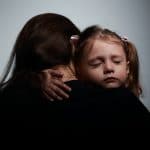
All babies will have eye screening at birth and again at about six weeks of age by a GP or health visitor.
In most parts of the world, children should be offered a screening test to look for reduced vision in one or both eyes during their first year at school.
Problems can occur at any age, either before a child reaches school age or after a normal screening test at school.
Signs a child has a problem with their sight include:
- sitting too close to the TV or insisting on watching TV in the dark
- rubbing their eyes a lot
- holding objects very close to their face
- blinking a lot
- problems moving around in the dark, such as when entering a tunnel or at the cinema
- showing signs of a squint – where the eyes don’t look in the same direction; one eye may turn inwards, outwards, upwards or downwards, while the other eye looks forward
Even if your child doesn’t show any of the above signs, they could still have an underlying eye condition.
If you’re worried about your child’s sight or there’s a history of squint or lazy eye in the family, take your child to an ophthalmic practitioner or an optometrist.
These specialists can be found in high street opticians or community health centers.
Do my children need to be able to read to have an eye test?
Children don’t have to be able to read to have their eyes examined. It’s possible to tell whether a child has a squint or needs glasses without asking them any questions using age-appropriate tests and equipment.
If the eye test detects any problems, your child will be referred to an orthopedist, who’s part of the eye-care team and usually works alongside ophthalmologists and optometrists. Orthopedists work in local health clinics or hospital eye clinics.
What are eye-drops used for during an eye test?
Some children, especially younger ones, might need eye-drops for their eye test. This is important because it helps to make sure the correct glasses are given and the optometrist or ophthalmologist can have a clear look at the internal structure of the eye.
The drops sting, but the discomfort doesn’t last for more than a few seconds. Once put in, the drops will need a while before they work – the darker the eyes, the longer it takes.
Eyedrops make the pupils larger so the back of the eye can be seen properly. They also relax the focusing mechanism in the eye so the prescription for glasses can be as accurate as possible.
Once the drops start working, your child might become sensitive to light. You could bring sunglasses or a brimmed hat or cap just in case. Some children may also feel that their vision is blurred or fuzzy. Again, this is because the drops stop the focusing mechanism working.
It’s not possible to reverse the effect of the eye drops, but they usually wear off after 6 to 10 hours and are gone fully within 16 to 24 hours.
About 1 in 10,000 children react to the drops with hyperactivity. This effect is only temporary and will wear off as soon as the drops wear off.
If your child does have a reaction to the eye-drops, your optometrist, orthoptist or ophthalmologist should inform your GP. They will add a note to your child’s medical records so similar medications aren’t prescribed in the future.
What if my child needs treatment?
The main thing is that your child has been diagnosed. Trust the optometrist or doctor and follow the advice given. Eye problems can become worse if left untreated.
It’s unlikely that a baby will need glasses but patches or other corrective procedures will be best started as young as possible.







